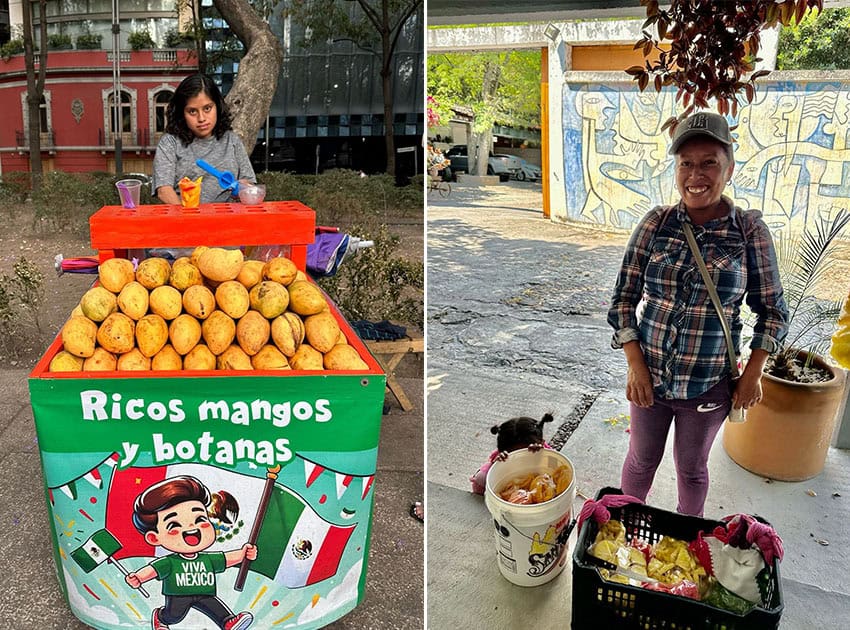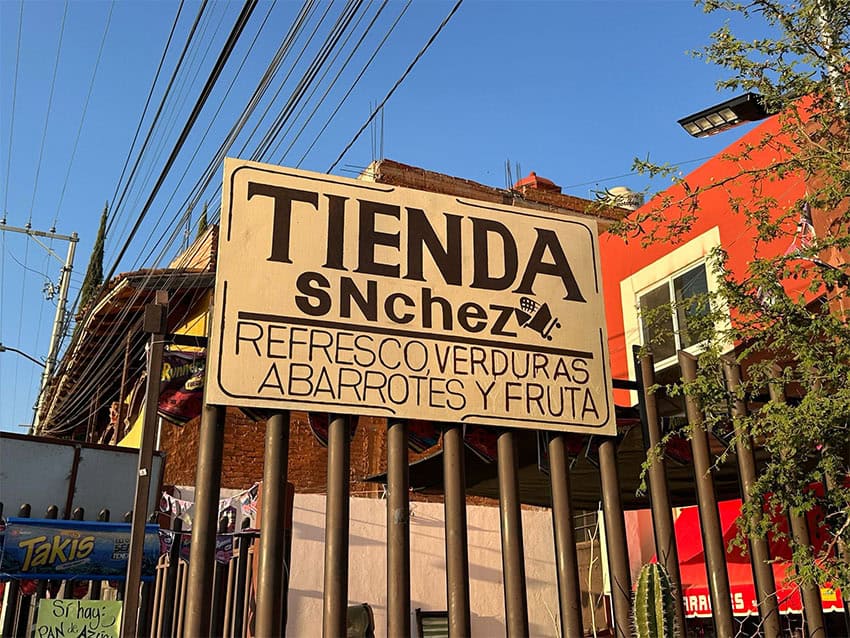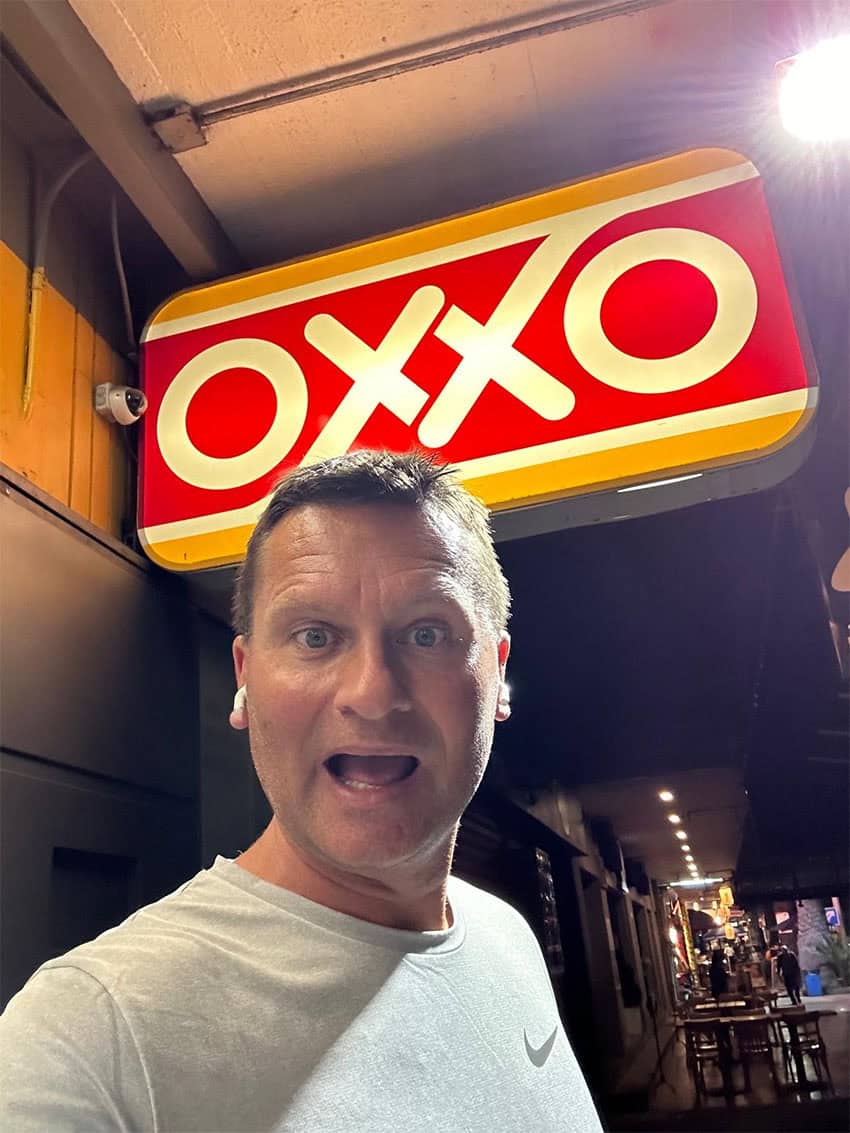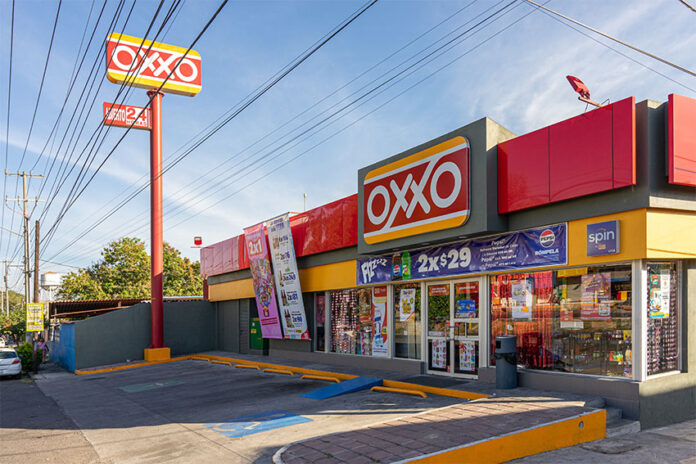We recently ran an article that talked about how Coca Cola in Mexico was going to stop advertising in schools. We also had one this week about how Mexico, starting March 31, prohibited the selling of junk food in schools.
This is a great first step, but as one of our readers commented, “They will just go across the street and buy it in an Oxxo instead.” And unfortunately, that reader is probably right.
I want to make clear that I have absolutely nothing personal against Oxxo. I am frequently a customer of their stores and find them to be exceptionally convenient. I think most of us would admit that the stores often come in handy for a quick snack, drink or cerveza fría. That being said, I have increasingly seen some troubling trends that concern me.
As most of us know, Mexico has incredible fresh fruit available throughout the year. It amazes me to see fruit vendors lining Mexico City’s Paseo de la Reforma in the heart of the financial district selling fresh cut mango, watermelon or coconut (sprinkled with lime and chile, of course).
I am also fascinated that in our office in San Miguel de Allende, every morning two local women (who walk throughout the city) stop by our office selling fresh fruit. The Mexicans in our office always buy from her. I, sadly, do not have the same discipline.
I actually have bought large packs of snacks for the office — things like granola bars, Snickers bars and Oreo cookies — and for the most part, the only person that eats them is me. The rest of our team prefers fruit.

Another great tradition in Mexico is eating from the many street vendors selling local foods like tamales, tortas, pozole and tacos de canasta. Warm, fresh, homemade food that you can eat while chatting with friends or colleagues — what more could one ask for?
Yet another custom that I admire is that of drinking refreshing and healthy aguas frescas — fresh fruit water drinks with flavors ranging from horchata to watermelon to lemon, and everything in between.
Which brings me back to Oxxo. None of these amazing fresh local foods can be found in an Oxxo. Before Oxxo (and increasingly 7-Eleven) stores took over the country, the local mom and pop “mini-supers” had a great mix of these local foods. They were often filled with fruits, coolers to keep tamales or tacos warm, and large 25-liter containers of fruit water juice that you could buy by the bolsa or glass.
Sadly, many of these stores have been put out of business. Oxxo brings an entirely different model with a hyper-efficient distribution chain and due to the nature of their stories, its difficult to have these kinds of products. Nearly everything is in a glass, plastic or metal container. Almost nothing is fresh. The vast majority of the food and drinks would not be considered healthy by anyone.

But convenient, they are. In Tulum, where my wife and I have traveled frequently for many years, we have seen a complete change in the diet of the locals with what has been a literal explosion in the number of Oxxos opened up on nearly every block in the past few years.
What used to be an almost entirely 100% fresh food diet (including fruits, breads, tacos, meats, etc.) has been mostly replaced with an “Oxxo diet.” It is very common to see construction workers, school children and others eating Oxxo food for breakfast, lunch and dinner. As a likely result, we have also seen a significant increase in the obesity rate of the local population.
Of course none of this is a surprise to Americans who have seen a similar phenomenon happen in the United States — with many cities having “food deserts” where little if any fresh or healthy food options are available.
What seems different to me about Mexico is that there is so much affordable fresh food very readily available, as well as such a rich, deep, long tradition of eating and of having a connection with healthy food. Highlighting this is precisely the motivation behind our “Taste of Mexico” video and article series in which we bring you the stories behind traditional Mexican foods and ingredients. Corn, beans, tomatoes, potatoes, mangos, papayas — they all have generations of logic behind when, why and how to eat them.
The increasing proliferation of chain-style restaurants popping up in wealthy neighborhoods of Mexico’s cities is a troubling sign of “progress.” It’s quite common now to see Dunkin’ Donuts, Dairy Queen, Krispy Kreme and Tim Hortons chain stores all over the place. Given the lessons learned from the health issues in the United States, is this really the right path for a developing Mexican population to be taking?
I don’t have the answer to this worldwide problem, but in my own little way I am trying to do what I can. I am increasingly eating fresh food for my own health and nutrition, but at the same time doing so to try to help sustain the local vendors of fresh foods in my neighborhood. I understand it’s an uphill battle, but I think we each have to try to do our part.

Of course this doesn’t mean that I will never go to an Oxxo again, but I certainly am trying to be more conscious of the impact of so many Oxxos dotting the Mexican landscape and what I can do. Just a few weeks ago, my favorite local tamale saleswoman, who has sold for years at the same corner near our home, told me, “Ya no es negocio” (“It’s no longer a good business for me”) and abruptly stopped selling them. Perhaps not unrelatedly, about a year ago an Oxxo opened a block from where she always set up her stand. Once traditions like these are gone, its unlikely they will ever come back.
Travis Bembenek is the CEO of Mexico News Daily and has been living, working or playing in Mexico for nearly 30 years.
